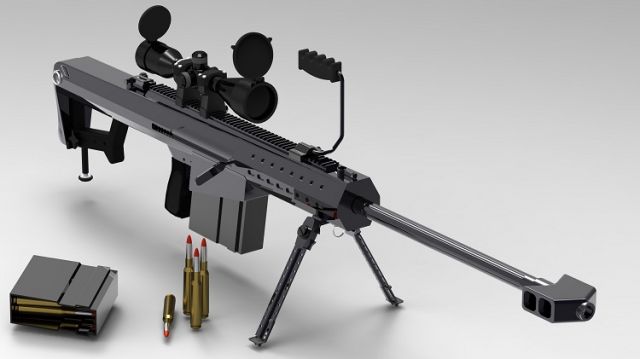
The Half Mile shot.
Nearly four feet long. Over twenty pounds in weight. Bolt action repeater, firing a bullet a full half inch across. The shooter uses his thumb to test the magazine spring. He presses down the first bullet and feels the smooth return. The bullets are shiny. Polished by hand Snipers bullets. He lifts the heavy rifle and presses home the magazine until it clicks into place and presses it home with his palm. He opens the bipod legs one at a time and clicks them against the detents. Glancing up the range he lays the rifle on the matting. Squatted next to it and laid down in one fluid motion. He lays like a dead man arms flung forward around the gun . Snuggled his right shoulder close to the butt and lays his cheek gently against the stock . Clamps his left hand over the barrel fingers under the scope. Eases his right eye to the scope. Breathes out.
Firing a sniper rifle over a long distance is a confluence of many things. It starts with chemistry. It depends on mechanical engineering. It involves optics and geophysics and meteorology. Governing everything is human biology.
The chemistry is about explosions. The powder behind the bullet in the shell case has to explode perfectly, predictably, powerfully, instantly. It has to smash the projectile down the barrel at maximum speed. The half inch bullet in the Barrett chamber weighs a hair over two ounces. One minute it is stationary. A thousandths of a second later it’s doing nineteen hundred miles an hour, leaving the barrels behind on its way to the target. That powder has to explode fast, explode completely , and explode hard. Difficult Chemistry.
Then the mechanical engineering takes over for a spell. The bullet itself has to be a perfect manufactured article. It must be totally uniform in size and weight. Perfectly round, perfectly streamlined. It has to accept ferocious rotation from the rifling grooves inside the barrel. It has to spin and hiss through the air with absolutely no wobble, no bias.
The Barrel has to be tight and straight. No good at all if a previous shot has heated and altered the barrel shape. The barrel has to be a mass of perfect metal, heavy enough to remain inert. Heavy enough to kill the tiny vibrations of the bolt, the triggers and the firing pin. Clamping the left hand over the top of the gun damps out any residual shock or vibration.
Optics play a big part. The shooters eye is an inch behind the scope. He breathes in and out to settle his position. Because geophysics are crucial. Light travels in a straight line but it’s the only thing that does. Bullets don’t. Bullets are physical things which obey the laws of nature like any other physical things. They follow the curvature of the earth. Eight hundred and eighty yards is a significant piece of curvature. The bullet comes out of the barrel and rises above the line of sight, then passes through it, then it falls below it. In a perfect curve like the earth.
Except it’s not a perfect curve because the very millisecond the bullet is gone gravity is plucking at it like a small insistent hand the bullet cannot ignore it. It’s a two-ounce copper-jacketed lead projectile traveling at nearly nineteen hundred mile an hour but gravity has it’s way. Not very successfully at first but its best ally chips in. Friction. From the very first millisecond of its travel air friction is slowing the bullet down and handing gravity a larger and larger say in its destiny. Friction and Gravity work to slow it down.
So you aim high. You aim maybe ten feet directly above the target and eight hundred and eighty yards later the curvature of the earth and the pull of its gravity bring that bullet home to where you want it.
Except you don’t aim directly above the target. Because that would be to ignore meteorology. Bullets travel through air and air moves. It’s a rare day when air is still. The air moves one way or another left or right, up or down, or any combination. The shooter watches the leaves on the trees and can see a slow steady breeze coming out of the North. Dry air moving slowly right to left across the line of sight. So he aims about eight feet to the right and ten feet above where he wants to put the bullet. That way he would launch the projectile and let nature curve it left and down.
So the technique is to wait. Just to gaze through the sight until the breathing is regular and the heartbeat is slow. Then to tighten the trigger finger slowly and wait some more. Then count the heartbeats. One -and-two-and three-and-four. Then fire between the beats when the vibration is as small as a human being can get it.
Result
The Perfect Shot.

Article submitted by Peter Watson.

